Cold Vulcanised Ceramic Pulley Lagging
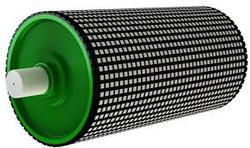
Cold Vulcanized Ceramic Pulley Lagging is an essential component of conveyor systems that operate in harsh environments where durability, wear resistance, and chemical resistance are required. It provides increased wear resistance, high temperature resistance, chemical resistance, enhanced durability, improved safety, easy maintenance, and is cost-effective.
Cold Vulcanised Ceramic Pulley Lagging – FRAS
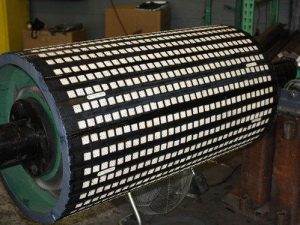
Cold Vulcanized Ceramic Pulley Lagging – FRAS is an essential component of conveyor systems that operate in harsh environments where durability, wear resistance, chemical resistance, and fire-retardant properties are required. It provides increased wear resistance which extends the lifespan of the conveyor system and reduces maintenance costs.
Hot Vulcanised Ceramic Pulley Lagging
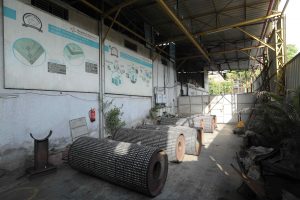
Hot Vulcanized Ceramic Pulley Lagging is an essential component of conveyor systems that operate in harsh environments where durability, wear resistance, and chemical resistance are required. It provides increased wear resistance, enhanced durability, and improved safety, making it a cost-effective solution for heavy-duty applications.
Hot Vulcanised Ceramic Pulley Lagging – FRAS
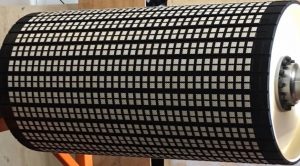
Hot Vulcanized Ceramic Pulley Lagging – FRAS is an essential component of conveyor systems that operate in harsh environments where durability, wear resistance, and chemical resistance are required. It provides increased wear resistance, enhanced durability, and improved safety, making it a cost-effective solution for heavy-duty applications, especially in underground coal mines and other hazardous environments.
80% Ceramic Pulley Lagging
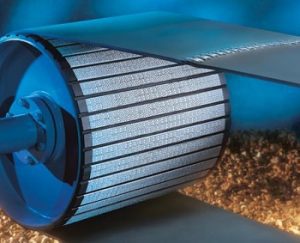
80% Ceramic Pulley Lagging is an essential component of conveyor systems that operate in harsh environments where durability, wear resistance, and chemical resistance are required. It provides increased wear resistance, enhanced durability, and improved safety, making it a cost-effective solution for heavy-duty applications.
FEATURES AND BENEFITS:-
- Increased grip and traction for applications where rubber lagging is experiencing slippage.
- Maximum ceramic coverage protects the surface from physical damage.
- Rubber layer between all tiles sides to provide cushioning and reduce the risk of tile cracking and damage.
- Available in highly abrasion resistant SBR for above ground applications and FRAS for underground and high risk applications.
- High quality rubber formulations designed for good bonding, resistance to degradation by out door exposure, and good abrasion resistance.
- Buffed CN Bonding layer for increased adhesion.
- Available with uncured bonding layer for Hot Vulcanised application.
- Can be supplied in a range of thicknesses (12,15 and 20 mm).
- Suitable for long term service at temperatures from -40C to +70C.
- No tile debonding from the rubber backing.
- Increased tile coverage reduces shear stress between the lagging and the bottom belt cover.
FAQs of Ceramic Pulley Lagging
Q: What is a Ceramic Lagging Pulley?
A: A Ceramic Lagging Pulley is a type of conveyor pulley that has a ceramic tile lining bonded to its surface. This lining, also known as lagging, provides superior traction and durability, making it ideal for high-speed, heavy-duty applications.
Q: What are the benefits of using a Ceramic Lagging Pulley? A: The benefits of using a Ceramic Lagging Pulley include:
- Improved traction and grip on the conveyor belt, reducing slippage and improving conveyor efficiency
- Longer lifespan and durability due to the high wear resistance of ceramic
- Reduced maintenance costs and downtime, as the ceramic lagging requires less frequent replacement compared to other materials
- Reduced noise levels and vibration, improving workplace safety and comfort
Q: What types of applications are Ceramic Lagging Pulleys suitable for?
A: Ceramic Lagging Pulleys are suitable for a wide range of applications, including mining, cement, steel, power generation, and other heavy industries. They are particularly useful in high-speed conveyor systems where slippage can be a significant issue.
Q: How is the ceramic lagging applied to the pulley surface?
A: The ceramic lagging is applied to the pulley surface using a bonding agent. The surface of the pulley is first prepared by cleaning and roughening it to ensure proper adhesion. The ceramic tiles are then placed onto the surface and held in place until the bonding agent dries and cures.
Q: Can Ceramic Lagging Pulleys be customized to fit specific applications?
A: Yes, Ceramic Lagging Pulleys can be customized to fit specific applications. The size and shape of the pulley can be tailored to fit the conveyor system, and the type and thickness of the ceramic tiles can be selected based on the specific requirements of the application.
Q: Are there any disadvantages to using Ceramic Lagging Pulleys?
A: One potential disadvantage of using Ceramic Lagging Pulleys is their higher initial cost compared to other types of lagging materials. However, this is often offset by the longer lifespan and reduced maintenance costs of ceramic lagging. Additionally, the installation process can be more complex and time-consuming compared to other types of lagging materials.

